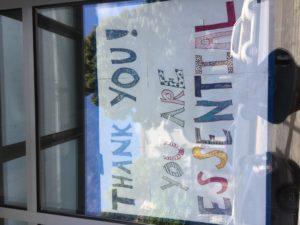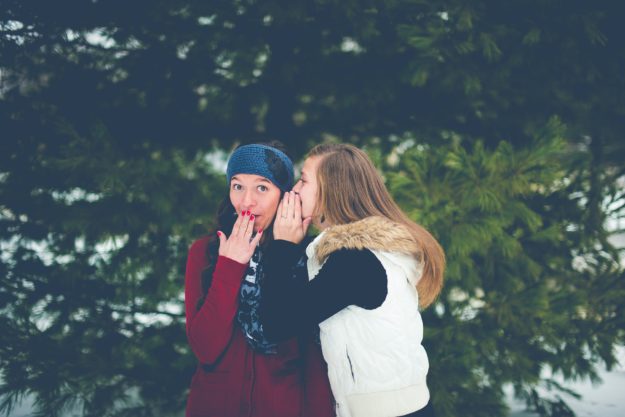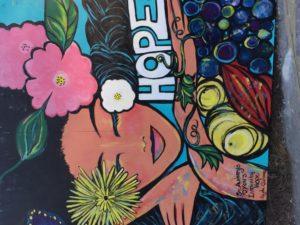How to Use Psychology to Pre-Suade Donors to Give
 Are you leading with a “gift” or “favor” to positively incline your donor to say “yes?”
Are you leading with a “gift” or “favor” to positively incline your donor to say “yes?”
This time of year is what I call “presuasion time.”
Because if you’re thoughtful about it, you can presuade donors to give up to the moment you ask!
That’s what we reviewed in Part 1 of this two-part series, where I described research from Robert Cialdini, author of the seminal Influence: The Psychology of Persuasion, and the newer book, Pre-Suasion: A Revolutionary Way to Influence and Persuade, and discussed how you might apply this research to your fundraising strategies. We learned the importance of leading with a “gift” or “favor” that will incline your donor favorably in your direction. Even the smallest of favors can create significant goodwill, and there are simple ways to boost the likelihood your favor will be returned.
-
Today we’re first going to look at a way to tweak your language to make a difference.
-
Then we’ll explore some types of favors donors are likely to value enough to want to reciprocate.
First, a reminder: Truth be told, every time of year is presuasion time. Everything you do with supporters should be designed to prime the pump so people are pre-disposed to give to you the next time you ask. Whether that’s next week, the week thereafter, or any week of the year! Whenever you’re not asking — and you should plan to send at least three non-asking communictions for every one ask — you should be in presuasion mode.
So, let’s get a little psychologically-minded, keeping in mind one of the six core Cialdini principles of Influence and Perusasion: Reciprocity. In brief, human beings often feel obligated to return favors, even if they are unasked for.






 Have you ever received confoundingly terrible customer service? Maybe at a restaurant, hotel, fast food restaurant or retail outlet? It happens all the time and, likely, you’ve thought to yourself: “Why on earth are they treating me like this? It’s so stupid! Don’t they realize I’ll never come here again?”
Have you ever received confoundingly terrible customer service? Maybe at a restaurant, hotel, fast food restaurant or retail outlet? It happens all the time and, likely, you’ve thought to yourself: “Why on earth are they treating me like this? It’s so stupid! Don’t they realize I’ll never come here again?”
 Want your donors to sustain you? Then you can’t consume them in five minutes.
Want your donors to sustain you? Then you can’t consume them in five minutes.
 Today a friend, who serves on the board of a struggling local arts organization, asked me what they can do to increase their fundraising. I asked her a few questions; then answered simply: “Have more conversations with people; make more friends.”
Today a friend, who serves on the board of a struggling local arts organization, asked me what they can do to increase their fundraising. I asked her a few questions; then answered simply: “Have more conversations with people; make more friends.”
 Here is some wisdom gleaned from many decades of personal nonprofit work.
Here is some wisdom gleaned from many decades of personal nonprofit work.
 Did you ever wonder if there is a foolproof way to communicate with donors?
Did you ever wonder if there is a foolproof way to communicate with donors?








 What do you spend more time on? Asking or thanking?
What do you spend more time on? Asking or thanking?
 I never begin writing a fundraising appeal without beginning with a template and checklist. It’s always good to remind yourself of the fundamentals.
I never begin writing a fundraising appeal without beginning with a template and checklist. It’s always good to remind yourself of the fundamentals.



 What I have for you is something you can do this week (or you can pick another week on your calendar that isn’t already overfilled with appointments, assignments, meetings and what-not). It’s really simple and really powerful. There’s one catch: you have to put aside 45 minutes/day for five days. If you’re resistant to change, read no further. This post isn’t for you. If, however, you have a hunch you might be able to move from good to great, then… read on (oh, and there’s a little bonus ‘gift’ at the end).
What I have for you is something you can do this week (or you can pick another week on your calendar that isn’t already overfilled with appointments, assignments, meetings and what-not). It’s really simple and really powerful. There’s one catch: you have to put aside 45 minutes/day for five days. If you’re resistant to change, read no further. This post isn’t for you. If, however, you have a hunch you might be able to move from good to great, then… read on (oh, and there’s a little bonus ‘gift’ at the end).
 If you’re constantly encountering people on your staff or board who want to curtail your fundraising efforts, you’re not alone.
If you’re constantly encountering people on your staff or board who want to curtail your fundraising efforts, you’re not alone.





 For this year’s appeal, are you shooting from the hip?
For this year’s appeal, are you shooting from the hip?
 People are unpredictable sometimes. They’re also predictable.
People are unpredictable sometimes. They’re also predictable. What do you spend more time on? Asking or thanking?
What do you spend more time on? Asking or thanking?

 I know you’re working on calendar year-end fundraising right now.
I know you’re working on calendar year-end fundraising right now.
 The modern model is more like a vortex — an energized circle where everyone is equal. People move in and out as needed, and your job is to keep the energy flowing.
The modern model is more like a vortex — an energized circle where everyone is equal. People move in and out as needed, and your job is to keep the energy flowing.
 How often have you heard someone say “I hate fundraising; I’ll do anything else,” or something along those lines?
How often have you heard someone say “I hate fundraising; I’ll do anything else,” or something along those lines?
 What do you most need to sustain your nonprofit through thick and thin?
What do you most need to sustain your nonprofit through thick and thin?
 Trust defines the credibility and legitimacy not only of your organization, but of the entire social benefit sector. Yet too few organizations make the effort to operationalize this construct into their fundraising and marketing planning.
Trust defines the credibility and legitimacy not only of your organization, but of the entire social benefit sector. Yet too few organizations make the effort to operationalize this construct into their fundraising and marketing planning.

 Ever have a well-meaning, yet perhaps overly controlling or risk-aversive, boss say to you:
Ever have a well-meaning, yet perhaps overly controlling or risk-aversive, boss say to you:
 Spring is always a good time for rebirth and dusting away the cobwebs. And what a grave, dusty, cobwebby year it’s been.
Spring is always a good time for rebirth and dusting away the cobwebs. And what a grave, dusty, cobwebby year it’s been.
 Giving is an emotional experience. It deserves an emotional response.
Giving is an emotional experience. It deserves an emotional response.
 One of my pet peeves as a donor is making a contribution (via a peer-to-peer request or tribute gift in honor or memory) in support of a friend; then receiving nothing but a form receipt.
One of my pet peeves as a donor is making a contribution (via a peer-to-peer request or tribute gift in honor or memory) in support of a friend; then receiving nothing but a form receipt.

 13 happens to be my lucky number. I want it to be lucky for you too.
13 happens to be my lucky number. I want it to be lucky for you too. The Unfair Exchange
The Unfair Exchange
 People are more generous when they feel more connected.
People are more generous when they feel more connected. 

 If I had to tell you what you need to do to succeed with major gift fundraising in one short paragraph it would be this:
If I had to tell you what you need to do to succeed with major gift fundraising in one short paragraph it would be this:
